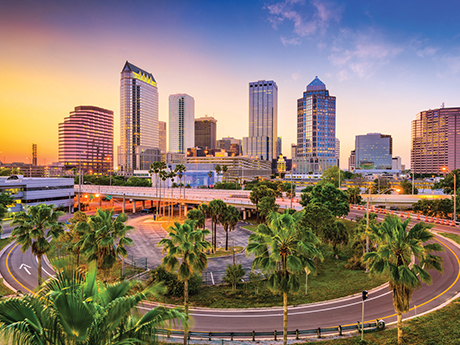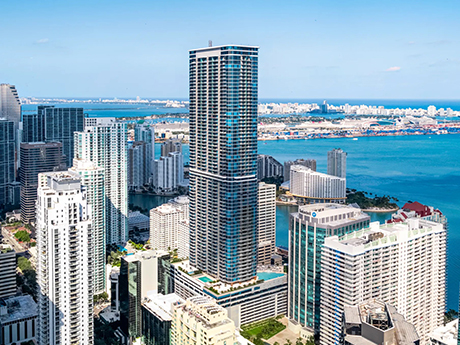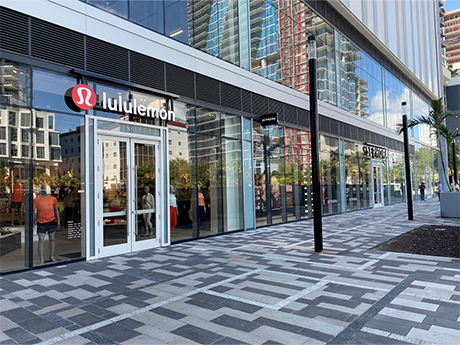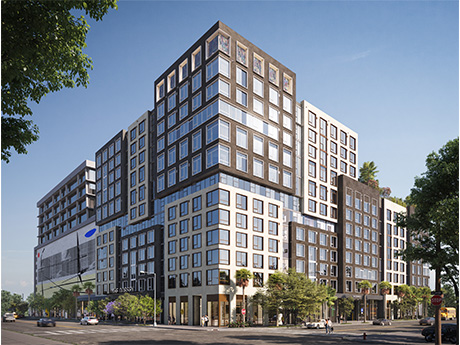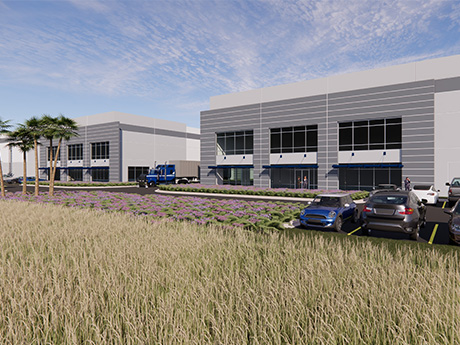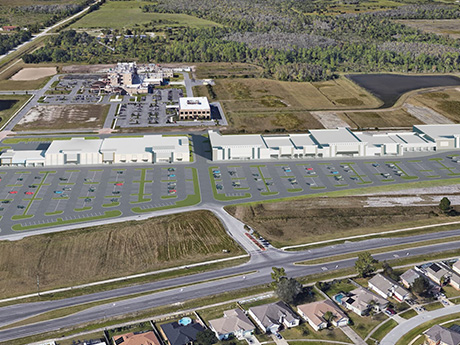The commercial real estate market, particularly in the retail leasing sector, has been navigating a complex and dynamic landscape over the past few years. With a blend of high demand, limited supply and fluctuating economic variables, the Orlando market presents both challenges and opportunities for developers, landlords and tenants alike. High demand, limited supply One of the most prominent trends in the Orlando retail leasing market is the high demand for quality retail spaces. Retailers are eager to establish and expand their presence in this thriving market, driven by a growing population and increasing consumer spending. However, the inventory of quality existing retail bays is incredibly scarce. This scarcity has created a competitive environment where desirable locations are quickly snapped up, often at premium prices. The supply-demand imbalance has pushed developers to sharpen their pencils and critically analyze the feasibility of new projects. Despite the strong demand, many deals struggle to pencil out due to the high costs of construction materials and labor. These costs have remained elevated, making it challenging for developers to achieve a satisfactory return on investment. As a result, some projects are delayed or shelved, further constraining the supply of retail space. Housing spurs development The …
Market Reports
Orlando’s industrial market has enjoyed consistently low vacancy, robust new development and significant rent growth year after year since the onset of the pandemic. While fundamentals remain strong, project deliveries and changing size preferences for leased space have caused a shift in activity. From an economic perspective, Orlando is well-positioned. The unemployment rate has decreased by 30 basis points since first-quarter 2024, reaching 2.9 percent, notably lower than the national average of 4.3 percent. Over the past year, nonfarm employment has grown by 1.4 percent with construction employment seeing a significant increase of 2.9 percent during the same period. Small to mid-sized spaces For the past 20 consecutive quarters, Orlando has maintained positive net absorption. Small bay and other tenants under 200,000 square feet have dominated leasing activity, while demand for spaces over 200,000 square feet has significantly slowed. As a result, year-to-date absorption is just over 800,000 square feet, representing a 40.8 percent decrease compared to 2023’s midyear total and the lowest midyear total since 2020. This slowdown in absorption is accompanied by a rise in vacancy rates, which have increased by 1 percent since last year and 3 percent since 2022. ATR Commercial Flooring took 150,600 square feet …
In the Tampa Bay area, industrial activity remains strong to this point in 2024. According to market research from Colliers, the industrial market closed the first quarter of the year with a vacancy rate below 6 percent. From 2019 to 2022, leasing activity increased, with some fluctuations between quarters. Meanwhile, 2023 saw more than 12.2 million square feet of renewals, expansions and new leases in the greater Tampa Bay area. The data backs up what we are seeing as brokers – a high-demand market with positive net absorption. With that, there are also several trends that have emerged in 2024. 1.) A generally competitive but well-balanced market. While the Tampa Bay industrial market is competitive, it’s overall well-balanced — favoring neither the landlord nor tenant in its current state (of course, dependent on size and submarket). This balance can be attributed to a slowdown in new construction, high occupancy rates, rising rental rates and continued strong demand. However, rates are not rising as quickly as they have been in the past few years, and tenants are selective about space and want to see several options and thoroughly survey the market before executing a deal. There are also pockets of the …
By Ben Eisenberg of Transwestern In 2023 and continuing into 2024, Miami’s industrial sector experienced moderate growth due to reduced lease turnover and despite accelerating interest rates and economic uncertainty. However, the market’s strong industrial fundamentals and international connectivity via Miami International Airport and PortMiami continue to demonstrate its enduring strength and resilience. Miami’s industrial market is powered by freight, logistics and e-commerce demand, along with traditional distribution, service and light assembly. The region continues to experience steady population growth that drives sustainable consumption of goods and services and, ultimately, the need for warehouse space. Accounting for nearly 27 percent of Florida’s overall population, Miami was home to more than 6.2 million people at the end of 2023 and is projected to grow to 6.3 million this year. The region’s population has expanded by nearly 7.6 percent over the past 10 years. Increased migration to the Sun Belt has boosted wealth, disposable income and consumption, making Miami one of the nation’s wealthiest metro areas, with some of the highest average home values. In the first quarter of 2024, Miami’s unemployment rate reached a record low of 1.5 percent and has remained below 2 percent since the fourth-quarter 2022. The region’s …
Miami’s multifamily sector was on fire from the end of 2020 through the beginning of 2023 as the market received a wave of newcomers, primarily from affluent Northeastern and Western states. During the height of the pandemic, roughly $1 out of every $6 in income that moved nationwide relocated to Florida, more than any other state. And Miami-Dade County saw the second highest inflows of any county in the country behind only Palm Beach, two counties to the north of Miami-Dade. This influx resulted in tremendous rent growth, booming new development and record-setting sales. The period also marked dozens of corporate expansions and relocations to the area and a consistent sub-3 percent unemployment rate dating back to August 2022, which is below today’s 3.8 percent national rate. Since then, things have slowed down, though the epic in-migration of wealth has made a permanent impact. Miami’s multifamily fundamentals stand out as a beacon of resilience amid supply challenges across the Sun Belt. Infill rents have remained flat since 2022, notching slight increases in 2024, and occupancy has faltered only slightly. This is rarely celebrated, but in this case, it represents Miami’s unique strength. Demand also emerged for a higher caliber of …
The retail sector in South Florida is undergoing adjustments that reflect the region’s dynamic economic landscape and evolving consumer preferences. One notable trend is evident in the restaurant sector, where owners increasingly aim to expand by opening new locations and entering lucrative markets. This trend is primarily driven by consumer spending, particularly the continual growth of Miami’s tourism industry. Visitors directly inject capital into the local economy, leading to increased disposable income that often circulates back through experiential commerce such as restaurant sales. A clear indicator of the local market’s strength is the ongoing rise in rental asking rates, significantly surpassing national averages. A robust 4.6 percent upturn in asking rent this year, as reported by CoStar Group, demonstrates retailers’ ability not just to survive but to thrive in a market with elevated asking prices compared to the rest of the state. This upward trend in rent is accompanied by a low 2.8 percent vacancy rate, according to CoStar data, indicating a competitive landscape where profitable lease opportunities are increasingly scarce for tenants. The retail sector within the restaurant industry continues to thrive, showing significant activity and heightened interest. The influx of high-net-worth individuals and a post-pandemic resurgence in immigration …
While many cities grapple with a declining population, softening rents and a struggling office market, Miami is riding a wave of population growth and apartment demand. This stems from the usual factors — sun, lifestyle and low taxes — as well as something unprecedented: an influx of large office users. New-to-market office tenants are transforming Miami’s economy and helping offset the challenges of inflation and rising interest rates. Miami multifamily fundamentals remain strong, with plenty of liquidity in the market. Our economy is more diversified than ever, and this has made it one of the most desirable markets in the country. Supply and demand People and businesses fleeing states with higher taxes and longer pandemic restrictions helped fuel Miami’s population surge between 2020 and 2022 and led to record-breaking rent growth during that period. Miami has become a magnet for large financial and tech firms, with well-heeled companies like Starwood Property Trust, Citadel Securities, BlockChain and Blackstone Group taking new office space. All told, a record 57 companies relocated or expanded to Miami-Dade County last year. Between May 2022 and May 2023, Miami added over 83,000 jobs, more than a 4 percent increase. Miami’s unemployment rate as of May 2023 …
Orlando’s industrial market continues to maintain strong market fundamentals. Despite leasing activity temporarily softening at the midway point of 2023 compared to the end of second-quarter 2022, exceptionally low vacancy rates persist, putting upward pressure on asking rental rates and further strengthening developer confidence in the market. With its strategic locational advantages and diverse tenant mix, the sector is well-positioned for future growth. According to Florida Commerce, Orlando’s unemployment rate is 2.6 percent, well below the national rate of 3.6 percent. Labor shortages remain, as jobs increased by 5,300 in the industrial-using sector and 6,200 in trade, transportation, and utilities. At the same time, Central Florida’s population growth — along with the state’s business-friendly conditions, from no state income tax to relative affordability — consistently spurs demand for e-commerce logistics and warehousing throughout the region. Asking rates surge Year-to-date industrial leasing volume in Orlando has been 4.4 million square feet, 2.4 million square feet of which was in the second quarter. Total vacancy stood at 3.5 percent in the second quarter, significantly lower than the national vacancy rate of 5.4 percent. The average asking rate for industrial properties in Orlando was $10.77 triple-net per square foot, reflecting a 5.4 percent …
The demand for retail space throughout Central Florida has been extremely high as new concepts are moving into the marketplace due to the mass exoduses from New York City and California. With the major population shift, we are running into the issue of limited supply to lease. Vacancy rates are currently projected at 3.8 percent, which is approximately 100 basis points below the 10-year historical average. Vacancy rates are projected to meet the mid-4 percent range by the end of 2023 due to the expected completion of more than 700,000 square feet of retail space during the fourth quarter, according to research from CoStar Group. Some developers are backing out of ground-up development deals due to the heightened labor and construction costs that every firm is experiencing. However, there are still some notable developments occurring in certain trade areas such as Minneola, Lake Nona, Apopka (Kelly Park) and Davenport, which are just some of the areas with projects expected to deliver in the fourth quarter of this year. These new ground-up projects require lessees to pay a higher rent to make these deals pencil out. The current average asking rate in Orlando is $27.77 per square foot, well ahead of …
The Orlando office market saw improved office activity in the second quarter after a somewhat slow start to the year. Quarter-over-quarter, the average deal size rose by 11.2 percent with Downtown, South Orlando and East Orlando as the three submarkets benefitting from an increase in office leasing activity. The majority of institutional landlords in downtown Orlando are some of the early adopters of flight-to-quality phenomenon, and as a result, tenants from other submarkets have shifted their focus to the city’s Central Business District (CBD). On the other hand, South Orlando enjoys a built-in advantage of having perhaps the greatest number of restaurant options in the greater Orlando area, with easy access to both Sand Lake Road and Millenia Mall areas offering various food options. The need to be co-located with some of the military branches located in Central Florida Research Park drives many simulation and military/defense sector tenants to seek office space in East Orlando, also providing nearby access to the University of Central Florida. Aside from geographical location, more and more tenants are seeking out higher-quality office space while rightsizing their footprint. This is predominantly fueled by flex/remote office schedules combined with the need for employers to provide an …



